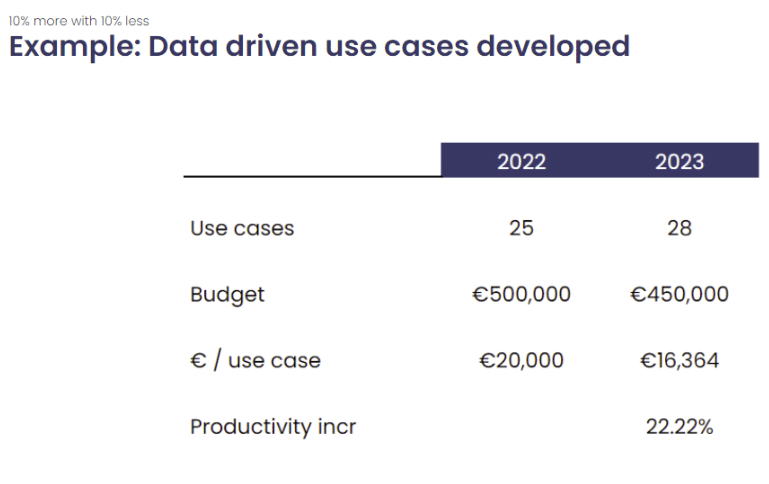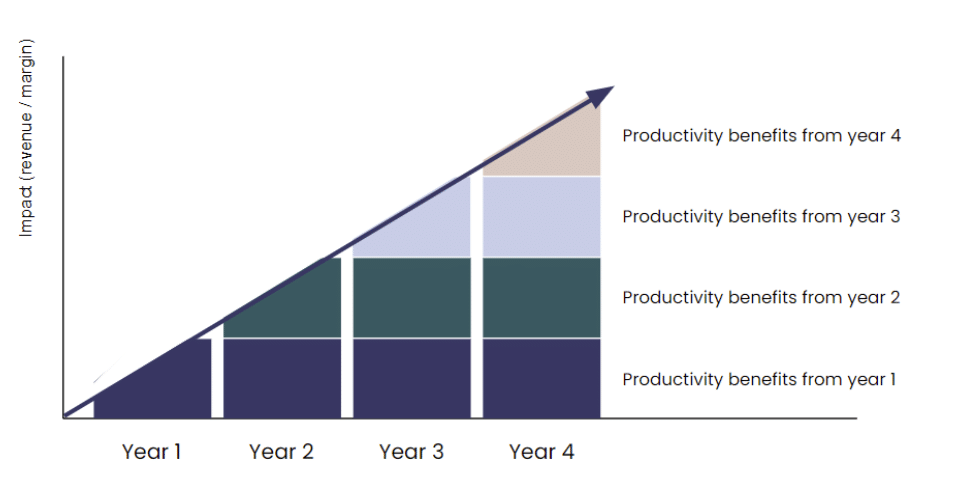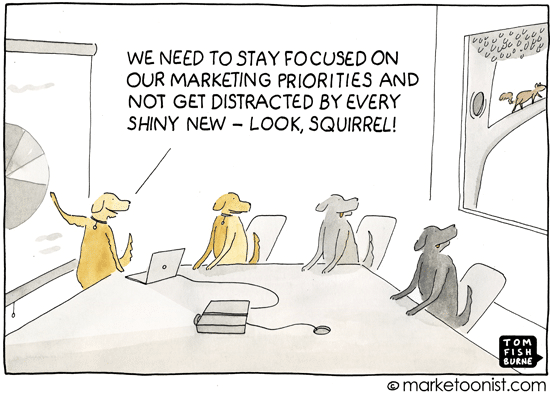Markets are shaky and budgets are tight. As a CMO, how can you do more with less in times of distress?
In marketing, being busy does not always equate to doing more business. Thankfully, with advances in technology, it is now easier than ever to improve productivity. But when it comes to content automation, customer insights generation, running automated media operations (with the likes of Google Performance Max), and general strategizing and problem-solving (with the help of ChatGPT), the key to success lies not in the technology itself, but rather in the ability to focus on the right problems to solve, prioritize, and execute systematically.
Incremental productivity: the “10-10” rule
When starting out looking for productivity increases, the “cheese grater” approach is likely the first thing that comes to mind. And it is not a bad approach – healthy pressure to produce slightly more can force teams to focus and prioritize, as well as create incremental improvements in production processes.
A good strategy is to apply the “10-10” rule, which means that you set the explicit target to produce 10% more with 10% less resources every year. As you establish this as a clear ambition for many years ahead, you might learn that the productivity leap becomes even bigger, because you are not only trying to solve for the short-term (i.e. this year’s budget).
This incremental strategy is all about maximizing outputs from existing investments – using more of your existing martech tools, data capabilities, and specialists to unlock untapped value. But do not forget to communicate the productivity plan, set clear goals, and ensure everyone is on board. And do not forget to plan for scale – enforce productivity by developing scalable solutions.
Here is an example of how this might look like:

Radical productivity: 10x potential
In many areas, such as content creation and distribution, the productivity increase should not be incremental, but rather radical – typically looking at more than 10x output levels with existing resources. However, to achieve more than 10x productivity, you need to automate and standardize more of your work than is currently the situation. As a general rule, you should automate what you can, and standardize what you cannot.
In a recent presentation with Avaus’ content automation partner DDB NORD, the Elkjöp team reported 10x outputs with 50% of the previous team size. That is quite some productivity improvement! See the full presentation from the Elkjöp case below, and all the other cases here.
How to unlock productivity in marketing
It is easy to get lost in all the opportunities that technology creates. But by following Avaus’ best practice process of exploration, prioritization, and planning, you are able to quantify the business potential, create a structured prioritization and plan, and enable faster results in a systematic way. The process is detailed below.
- Quantify the business potential
Start by identifying the areas with the most manual work and highest value potential. One organization identified that the biggest productivity blocker was the reusability of content assets across campaigns and markets. Another organization realized that automating audience management removed the need for target group specialists entirely. A third organization realized that by having online meetings, less time will be spent on the road in the sales organization.
What will have the biggest productivity impact for your organization will vary depending on the size of the organization, how you have organized marketing today, and how you are working with your current partners (e.g. if they are working on time and material basis, then it is likely a productivity blocker right there). With a structured framework, this process should take an hour or two to identify where to focus, and how much value can be created.
2. Prioritize impact that stacks over time
Automation and replication enable increased outputs over time. Focusing on the processes that can be fully automated to save time and efforts, will allow you to create productivity streams that keep on paying you back in the years to come.
Here is an example of how this might look like:

3. Execute systematically
As reported by HBR, avoid chronic busyness and focus on output. Make every completed action pave the way for the next one and stick to a committed development pace, even if new and shiny objects might appear and seem worth investing in. Having a set timeline and proper steering group practices, where the impact of the business case is followed up on a monthly or quarterly basis, is a good method that many organizations use to keep the team focused on the business priorities.

4. Set a baseline and follow up on productivity improvements
When starting your productivity journey, you need to start by establishing baseline metrics, such as hours spent for different types of tasks on an annual basis, how many outputs your team is able to create, or how much sales you achieve per FTE in your team. By establishing the baseline, even smaller changes that stack over time will bemade visible, which helps with keeping the team engaged and get a positive success spiral going.
5. Organize for efficiency
As technology advances towards low-code/no-code solutions, organizations can automate more tasks and increase productivity without massive technical work. However, the biggest challenge is often processes, skills, siloes, and the culture in the organization. Achieving 10x productivity will in many cases require rather big changes in how you are organized. An example of organizational blockers might be that the technical development department is calling too many shots of what should be prioritized or having everything prioritized at once, due to the lack of a clear business case and targets for productivity increase. Another typical situation is that even though technical development is fast, time is lost in aligning between departments, due to the organizational design being either channel- or product-based.
These are the blockers that will put clogs in the machine in the starting phase, but should be systematically sorted out over time. But only changing the way you are organized will not solve all the problems (as is depicted in the figure below). Also figuring out standardized ways of approaching certain problems is needed. Examples of these, which become productivity blockers if not defined for scale, include a standardized way to develop and deploy AI and advanced analytics models, a standardized way to design content, and a standardized way to activate campaigns across channels.

Summary
In today’s uncertain times, CMOs need to do more with less. However, the road to success is not simple. If it was, you would be more productive than you currently are. But by leveraging data, automation, and AI, you can unlock productivity gains and drive results – not only incrementally, but also radically.
Related articles:
Read more about our methodologies for structured and systematic work towards higher degrees of automation and productivity: Avaus Factory
Do you have a plan for how to leverage the new technological possibilities? Read more and download our pre-study: Generative AI
Are you looking to improve your company’s personalization efforts while also increasing efficiency? Read more: Content Automation
Why are we not seeing more evidence of the business benefits of marketing and sales automation? Read more: Sales Automation